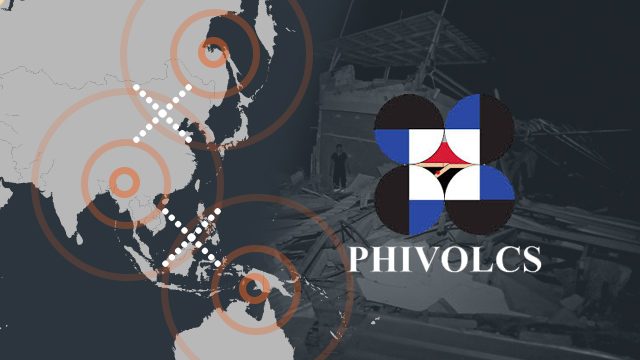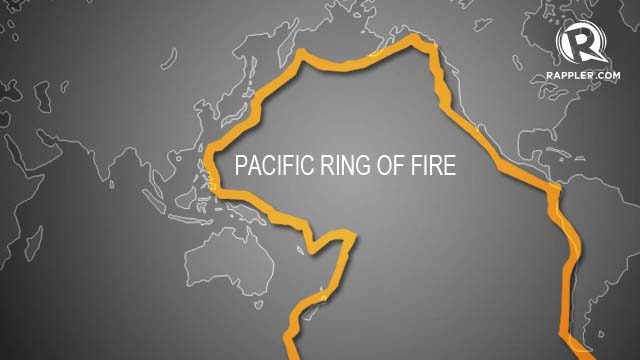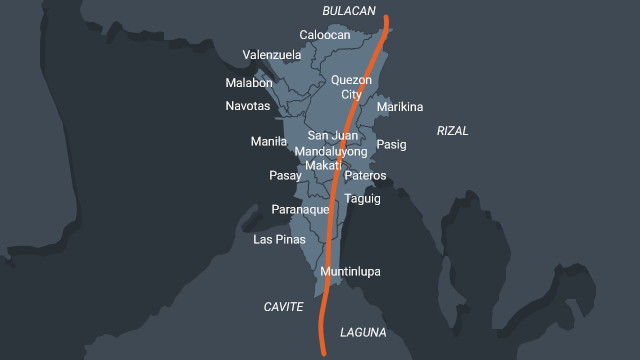SUMMARY
This is AI generated summarization, which may have errors. For context, always refer to the full article.

MANILA, Philippines – The Philippine Institute of Volcanology and Seismology (Phivolcs) dismissed rumors that the series of major earthquakes that hit the Pacific region in just a span of weeks are related to each other.
“No they’re not [related]. The faults that generated those earthquakes are not connected to each other and do not influence each other. Meaning, the earthquake in Myanmar, Japan, Zamboanga Peninsula [in the Philippines] or Ecuador are not related at all to each other,” Phivolcs director Renato Solidum said in a phone interview.
Solidum also added that the series of earthquakes in the Pacific region would not trigger the so called “Big One’ in the Philippines. (READ: How vulnerable is Manila to earthquakes?)
“One cannot say that the next earthquake will be in the Philippines. There is no basis for saying that because earthquakes are not related at all to each other,” he explained.
Earthquakes occuring in neigboring countries do not have an influence on each other, Solidum said.
“For example, Indonesia. The large earthquakes that have happened in Indonesia – magnitude 9.1 in 2004 – did not influence any earthquake in the Philippines. Likewise, in 2011 in Japan, the magnitude 9.0 earthquake also did not trigger earthquakes within its vicinity outside of Japan. There is no direct relationship,” he added.
Solidum, however, said that the movement of a fault may influence movements in nearby faults or segments of the fault. This is what happened in Japan, he added.
“So for a fault to influence another fault, it must be contiguous, or part of a zone where one segment will move and the other one can also move much later because it’s partly affected by the first motion… It must be proximal, it cannot be one country which is a little bit far to another country, like Japan and the Philippines,” Solidum explained.
Even earthquakes in the Philippines are not related to each other, he added.

Series of earthquakes
In April, at least 7 strong earthquakes have been recorded in countries located along or near the Pacific Ocean’s Ring of Fire.
In April 3, Vanuatu was hit by 6.9 magnitude earthquake, prompting the government to raise a tsunami warning. After 11 days, it was again hit by less stronger earthquake of magnitude 6.0, but nevertheless powerful.
On April 13, just two days after the earthquakes in Vanuatu, a magnitude 6.9 earthquake hit near Naypyidaw, Myanmar’s capital. Reports said, tremors were also felt in neighboring countries such as India and Tibet.
The next day, Mindanao, off the coast of Zamboanga del Norte, was hit by a magnitude 5.7 earthquake.
On the same day, Kyushu, the southernwestern island of Japan, was hit by a strong earthquake of magnitude 6.5 collapsing homes and sparking fires. This was followed by strong aftershocks as high as magnitude 6.2.
Two days after, a magnitude 7.0 earthquake hit the same island, prompting the government to issue a tsunami warning for the island. Both quakes left at least 41 people dead.
On Sunday, April 17, Ecuador was rocked by a magnitude 7.8 earthquake – the strongest to hit the country for decades, according to Ecuador Vice President Jorge Glas. The quake, which was also felt in Peru and Colombia, left at least 233 people dead as of Monday, April 18.
Preparedness, preparedness, preparedness

What dangers await when the West Valley Fault moves?
Check out the maps and the fast facts to understand the risks and plan how to survive when a strong quake shakes Metro Manila and surrounding provinces
After a 2004 study called “Metro Manila Earthquake Impact Reduction Study (MMEIRS)” indicated that Metro Manila is due for the “Big One”, the Philippine government has undertaken various preparedness campaigns across the country.
The study found that a magnitude 7.2 earthquake hitting Metro Manila could destroy 40% of the buildings in the metropolis and kill about 34,000.
On Thursday, April 21, the Office of Civil Defense will conduct its first nationwide simultaneous earthquake drill for 2016 in Clark Air Base Pampanga.
In May, the second Metro Manila earthquake drill, known as the #MMShakedrill, to be conducted by the Metropolitan Manila Development Authority is in the works. The first one was held on July 30, 2015. –Rappler.com
Add a comment
How does this make you feel?
There are no comments yet. Add your comment to start the conversation.